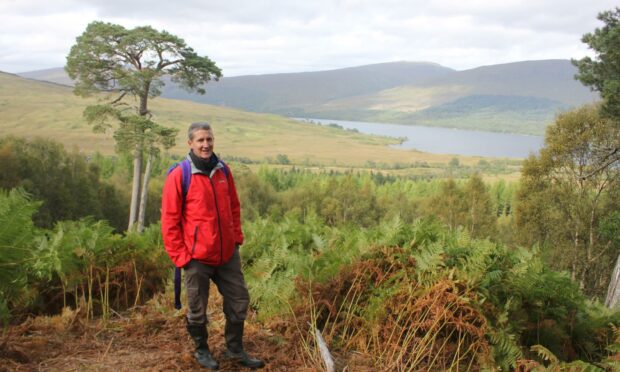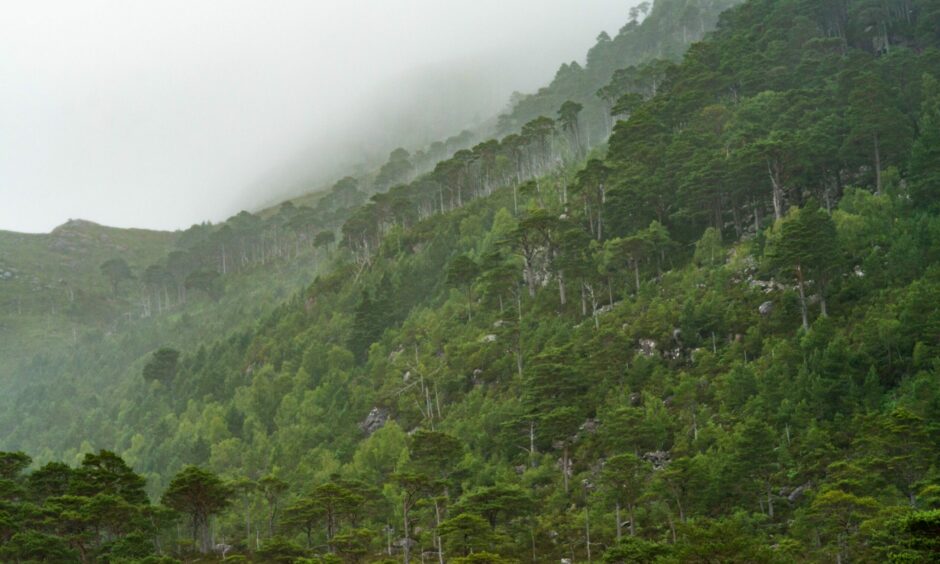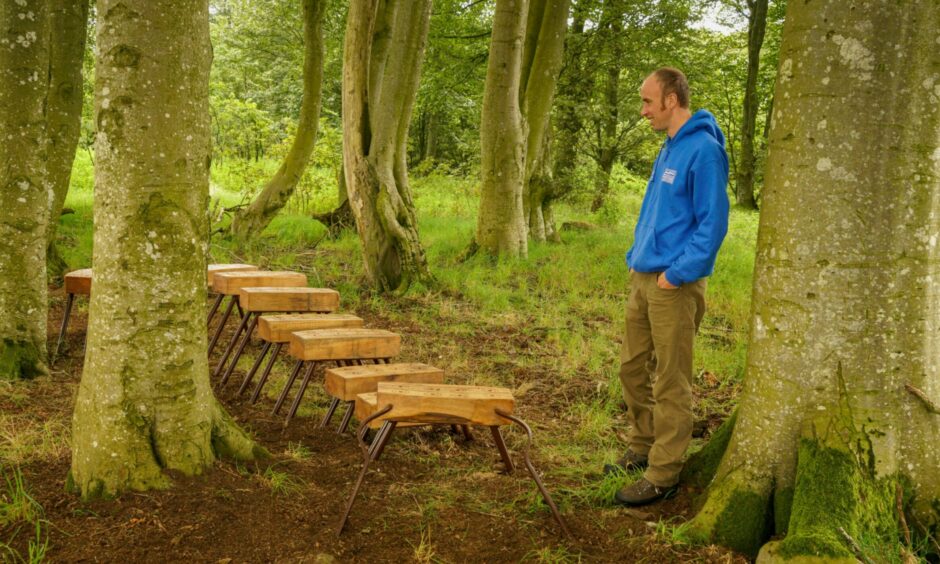The Scottish Government has been told new money to help restore and expand Scotland’s rainforest is just a fraction of what is needed.
Biodiversity minister Lorna Slater recently announced more than £1.3 million for forest recovery as part of a response to the nature and climate crises.
The money will go towards controlling invasive rhododendron and managing the impacts of wild deer.
It wasn’t quite the gift hoped for to mark this week’s 50th anniversary of the Woodland Trust.
The trust is among experts who estimate around £500m is required to properly tackle the issue.
Pushing for larger fund
George Anderson, Woodland Trust Scotland’s communications officer, said: “It does not fulfil the commitment the Scottish Government made at COP26 last November to restore and expand Scotland’s rainforest, and I think everyone acknowledges that.
“It does, however, signal willing during challenging times. We will take that as a positive for now.
“But we will continue to push for a much larger rainforest restoration fund down the road.”
Ahead of COP26, a range of bodies including the trust, urged ministers to set up a rainforest restoration fund to protect, restore and expand the world-renowned habitat.
A major report estimated about £500m is needed, and sought a commitment of £250m over ten years.
It said previously committed Scottish Government funds is not making significant inroads into the problem.
The Woodland Trust started in October 1972 and its first Scottish wood was Balmacaan by Loch Ness in 1984.
It now manages and looks after about 60 areas of woodland in Scotland.
This covers more than 34,594 acres from Sutherland to Stranraer and from Skye to Aberdeenshire.
It also aims to reverse the decline of rainforest fragments, also known as Atlantic of Celtic woodland, on the west coast by tackling major threats.
These include rhododendron which is increasingly dominating the rainforest and suppressing tree regeneration.
It is estimated more than 29,000 acres of core rainforest sites, and 42,000 acres of other important woodland sites in the rainforest zone, need to be cleared of rhododendron.
Scotland’s rainforest is a ‘unique and rare ecosystem’
During COP26, environment minister Mairi McAllan said the rainforest will be restored and expanded as a key part of a £500m investment in Scotland’s natural economy.
Ms McAllan told the Press and Journal this month: “Scotland’s rainforests are a unique and rare ecosystem.
“They are part of our cultural heritage. And they can provide an important nature-based solution to the climate emergency, as well as tackle biodiversity loss.
“Restoring our rainforests is important in and of itself. And it can provide opportunities for creating green jobs and supporting a fairer, greener Scotland.”
She said this is being done via the Forestry Grant Scheme and the Nature Restoration Fund.
The scheme focuses on the eradication of rhododendron.
Ms McAllan said it is hoped to increase support in the longer term, including from private investment.
Scotland has better tree cover (18%) than the rest of the UK. But it lags behind most of Europe, with an average of 37%.
Woodland Trust Scotland director Alastair Seaman says landowners should be encouraged to help restore and expand woodlands.
“We have a role to show people what good looks like.
“But if we are going to respond to the challenges of the nature and climate crises in Scotland we need to bring the landowning community along with us.”
He said a new generation of traditional Highland sporting estate owners are re-thinking their vision to include eco-tourism and expansion of native woodland and habitats.
However, new plans must work for people and communities.
Some recent successes
“There is a real opportunity here. Not just to be restoring nature, but to be doing that in a way that helps to restore and build vibrant communities.
“We are definitely looking for that sweet spot where what we’re doing with trees and woodlands can be of real benefit to people too.”
Recent successes for Woodland Trust Scotland include the Croft Woodland Project, a partnership involving the trust.
Since 2015 more than one million native trees have been planted on crofts, with a further two million planed by 2025.
In 2019 the trust bought its first mountain, Ben Shieldaig, after raising £1.6m.
It is investigating building social housing in the area to tackle a widespread problem of a lack of affordable homes.
“It affects us directly,” says Alastair Seaman.
“We have staff in the area who can carry out support work, such as fencers, deer stalkers etc. But where are they going to live?
“If we’re not at least considering this opportunity with the community we’re not being responsible landowners.”
The trust also acquired the neighbouring Couldoran Estate after a successful £8m appeal.
The estate lies in the rainforest zone and was once part of a network of woodland habitats that blanketed Scotland’s coast.
However, today only individual trees and isolated areas of woodland remain, due largely to historical deforestation and a significant increase in deer grazing.
The trust hopes to work with other neighbours to develop a nature-rich area.
“It’s hard not to look at the map and imagine it like pearls in a necklace with a number of landowners collectively doing interesting things that would create a lovely area of Scotland that is rich for nature”, said Mr Seaman.
‘Green laird’ debate
In encouraging growth, the trust has also called for a debate on regulating the system of giving carbon payments to landowners.
Landowners creating woodlands and taking CO2 out of the air can sell carbon credits to companies looking to offset their emissions.
It can provide valuable income for communities. But it has also raised concern about local people being priced out of owning or benefiting from land by so-called ‘green lairds’.
Mr Seaman said: “What that title and debate has done is remind all landowners in Scotland that they simply can’t ignore the wellbeing and needs of local people.
“Part of the green laird controversy is people buying up pieces of Scotland to offset their irresponsible environment behaviour elsewhere.
“But on the other hand, there are communities who own bits of land who are doing very well out of that. That’s because the income accrues to the community and it’s able to plough that into local needs.”
Mr Seaman says another challenge is finding staff to carry out the work required.
“We’re victims of our own success. People have woken up to the importance of trees and woodlands.
“But where are the people with the right skills to make this happen?
“If someone wants a guaranteed well-paid job in the rural environment then forestry is the place to be. There is huge demand for these skills.”
Ross Watson, the trust site manager for North Scotland, says the importance of woodlands has grown since the pandemic.
Interest in woodland growing
“People understand it a bit more. We hear more people wanting to plant trees, it’s become far more prevalent than previous years.
“I think that will grow as the climate emergency increases. You do feel that the momentum is heading more towards ecologically sympathetic land management.”
Are you interested in more exclusive and breaking Highland and Islands news from the P&J? If so, why not join our dedicated Facebook page HERE





Conversation